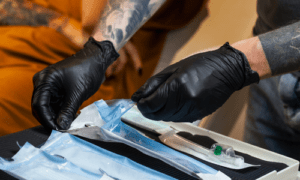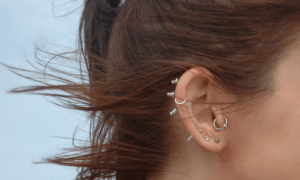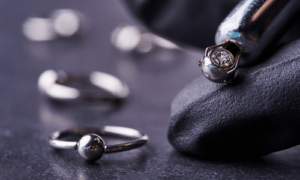While piercings can be a unique way to express yourself, there are some serious risks associated with body piercings, including infection, damage to the surrounding tissue, and even allergic reactions. Did you know that some types of piercings can also cause more serious problems? Sterling silver body jewelry, for example, can contain high levels of nickel which can cause allergic reactions in some people. So if you’re thinking about getting a piercing, make sure you do your research first and be aware of the risks.

The Dangers of Piercings
Body piercings can be a fun and stylish body modification, but there are certain dangers associated with piercings that need to be taken into consideration. Patients who opt for piercings may face possible infection, blood poisoning, scarring, keloids(overgrowth of scar tissue), and several other risks. Often, improper aftercare or low quality jewelry puts individuals at a higher risk for infection or scarring. It is important to avoid sterling silver jewelry as it can cause the formation of harmful black iron oxide when exposed to moisture and sweat. Taking extra precautions such as properly sterilizing the area prior to piercing, selecting high-quality jewelry, and visiting a clean establishment will help reduce many of the potential risks associated with piercings.
The Dangers of Piercings and Different Types
Body piercings can be an attractive way to adorn the body and express individuality, but it’s important to be aware of the associated risks with different piercings. Depending on the placement, some piercings can cause a variety of health issues including nerve damage, bruising, infection and allergic reaction to the metal jewelry used. Even something as seemingly harmless as earlobe piercings can become infected if not cared for properly.

Common body piercing locations include ears, noses, navels, lips and tongues. Some other locations include eyebrows for facial decorations, nipples for breast or chest artistry, and even genital piercings for intimate decorations. Depending on the type of piercing being done, different types of jewelry will be necessary.
Knowing all this information before getting a body piercing can help prevent any potential injury or complication.The more complex placements such as tongue, eyebrow, dermals, or even genital piercings could lead to infection if not done properly. It’s also important to consider that any metal jewelry worn in freshly created piercings needs to be made from materials that won’t tarnish or corrode easily. It is essential to take extra precautions when deciding on any type of body piercing and always consult an expert in the field before undergoing a piercing with unknown safety risks.
How to clean and care for your piercings to avoid infection
Taking care of your body piercings is essential in avoiding infections that could jeopardize not only the piercing itself, but your overall health. Cleaning and maintaining the pierced area with an antiseptic solution is one of the best preventative measures you can take to avoid any potential dangers associated with body piercings. If you opt for sterling silver jewelry, it is important to recognize that while they may be beautiful pieces, they also require special care due to their softness compared to other metals. You should clean them with a specialized non-abrasive jewelry cleaner as part of your regular piercing maintenance routine. However, it is highly encouraged to get titanium or gold. Titanium and gold piercing jewelry can be cleaned with soapy water. By taking these simple precautions, you will be well on your way to a healthy, happy piercing!
The Best Materials for Body Jewelry
When selecting the best material for body jewelry, there are several factors to consider. Generally speaking, titanium and platinum are the safest option for a piercing as they are least likely to react with the body. For example, titanium does not contain any nickel which is often a common trigger for allergies. Platinum is an inert metal which makes it hypoallergenic and less likely to cause irritation compared to other metals. Gold is another option that has been used historically, and also has low levels of irritating reactions or allergies when it comes to being within or on the skin. However gold is much more expensive than titanium or platinum in most cases. Sterling silver is often preferred for its aesthetic value in various types of jewelry, but it should be avoided because it contains significant amounts of nickel, a common allergen. This can irritate the skin and it carries the risk of reacting to sweat or the human body’s PH levels if left on for extended periods of time. By taking these variables into account, you can make sure you get the right type of material that best suits your needs.

Do Your Research!
Getting a piercing can be risky, given the potential side effects such as infection and skin irritation. However, if done safely and with proper aftercare it can also be a very rewarding experience. It’s important to weigh the risks versus rewards of any kind of body modification before taking the plunge. Educating yourself about the types of piercings and their associated risks is an essential part of that evaluation process. Understanding which materials for body jewelry are better for your skin health is also key. Though silver or other metals may be cheaper, ultimately titanium, gold or platinum are much safer for piercings. We urge you to make sure you go to a reputable studio such as Reef Side Tattoo where our professional staff cares about your well-being so you can pierce correctly and safely.
